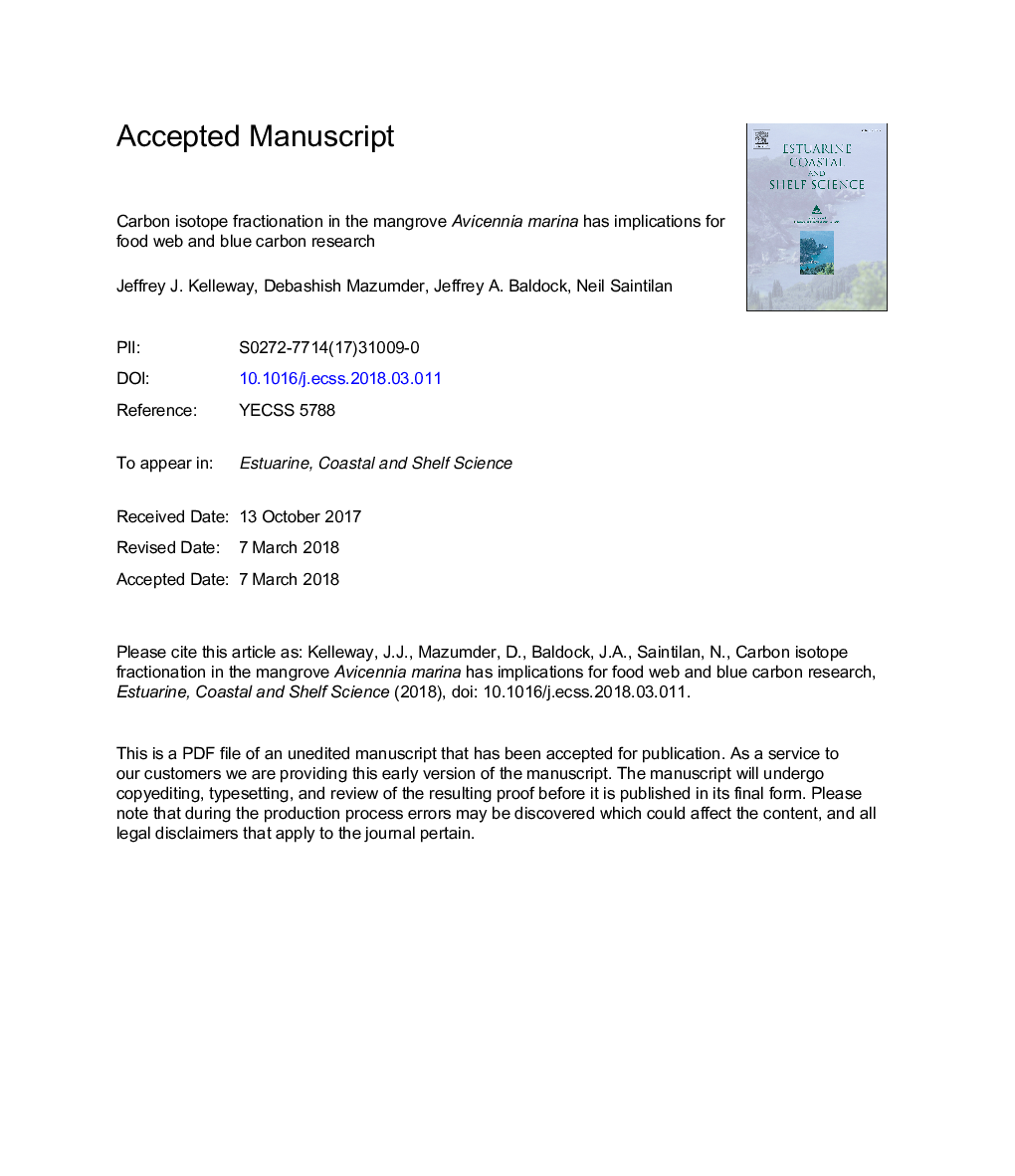| Article ID | Journal | Published Year | Pages | File Type |
|---|---|---|---|---|
| 8884907 | Estuarine, Coastal and Shelf Science | 2018 | 22 Pages |
Abstract
The within-plant δ13C fractionation we report for A. marina is greater than that reported in most other ecosystems. This has implications for studies of estuarine carbon cycling. The consistent and large size of the fractionation from leaf to woody stem (â¼2.0â°) and mostly consistent fractionation from leaf to root tissues (>3.0â°) means that it may now be possible to partition the individual contributions of various mangrove tissues to estuarine food webs. Similarly, the contributions of mangrove leaves, woody debris and belowground sources to blue carbon stocks might also be quantified. Above all, however, our results emphasize the importance of considering appropriate mangrove tissue types when using δ13C to trace carbon cycling in estuarine systems.
Related Topics
Physical Sciences and Engineering
Earth and Planetary Sciences
Geology
Authors
Jeffrey J. Kelleway, Debashish Mazumder, Jeffrey A. Baldock, Neil Saintilan,
